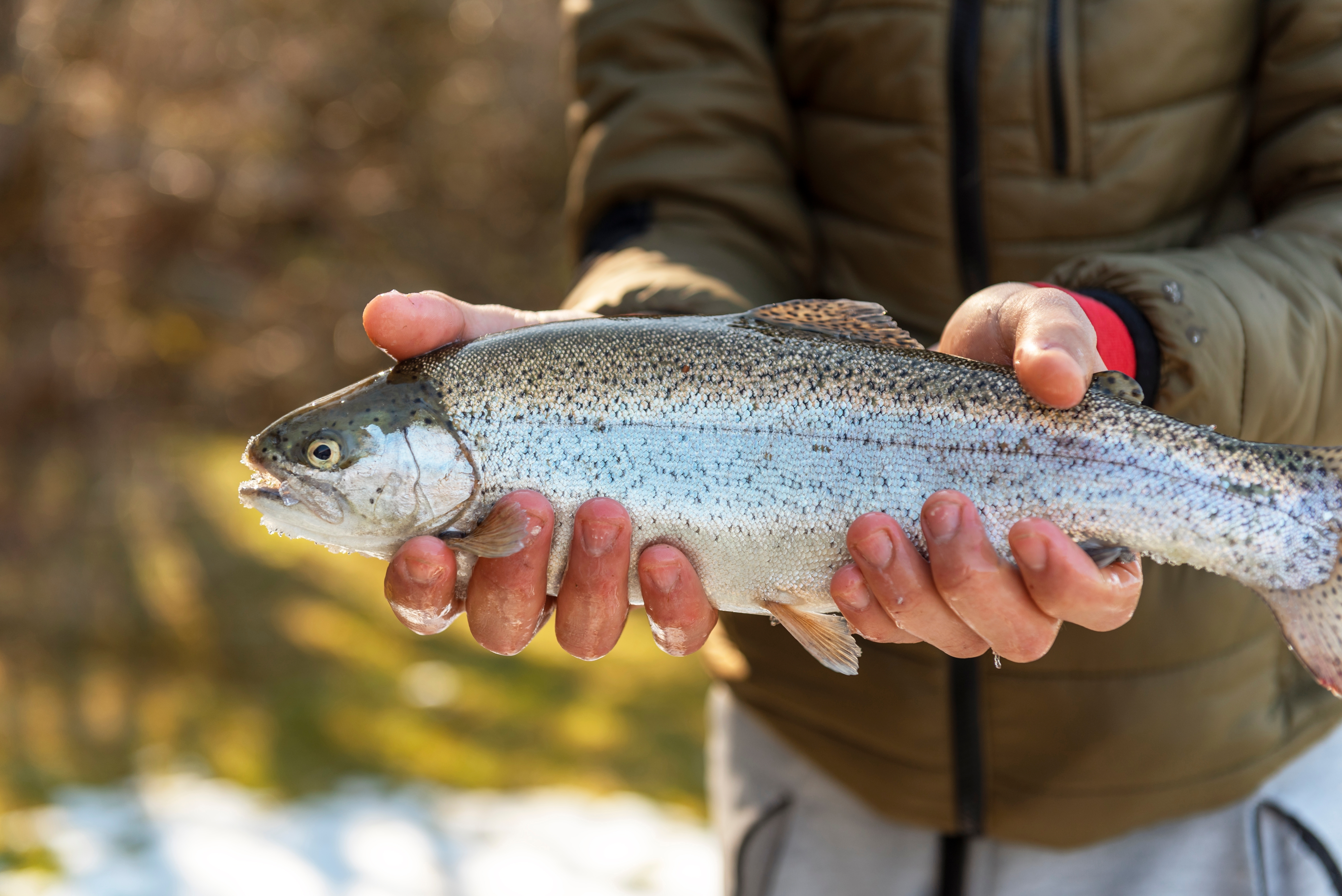
(Krems/Vienna, 01 April 2025) – A recent study on fish allergies has gained new insights into the reactivity to parvalbumins, the main allergens in fish. A research team from Karl Landsteiner University of Health Sciences and the Medical University of Vienna, together with international colleagues, examined the IgE reactivity to parvalbumins from 12 different freshwater fish species from Austria. The results of the study, published in the Journal of Investigational Allergology and Clinical Immunology, contributes to improve the diagnosis of fish allergy and offer patients more targeted dietary alternatives.
Many fish-allergic individuals do not react equally to all fish species. While some fish species can trigger severe allergic reactions, others may be tolerated by certain patients. However, identifying allergenic and tolerated fish species is challenging due to the large number of fish species consumed.
“Our research shows that parvalbumins from the salmonid family (e.g. trout and salmon) in particular caused strong IgE reactivity in 89-95 percent of the patients examined, while parvalbumins from Wels catfish, eel and tench triggered reactions significantly less frequently,” explains Christine Hafner from the Department of Dermatology at the University Hospital St. Pölten (a teaching and research location of KL Krems).
New insights into cross-reactivities and sensitization patterns
The study also examined the extent to which parvalbumins from different fish species can trigger cross-reactions. In particular, salmonids and perch-like fish (percids) proved to be the main sensitizers. In contrast, the Wels catfish parvalbumin showed significantly lower reactivity. Furthermore, 90 percent of patients who tested negative for Wels catfish did not show any reaction to other fish species. This could indicate that Wels catfish could be a potentially tolerated alternative for some fish allergy sufferers.
“These results are an important step towards personalizing allergy diagnostics. Instead of avoiding all fish, more precise testing could help to identify individually tolerated fish species and thus avoid unnecessary dietary restrictions,” says, Heimo Breiteneder from the Division of Medical Biotechnology at the Institute of Pathophysiology and Allergy Research of the Medical University of Vienna.
New approaches for allergy diagnosis and therapy
“Our research results suggest that fish allergy diagnostic tests should include parvalbumins from freshwater salmonids in the future in order to identify the majority of fish allergy sufferers. At the same time, IgE against Wels catfish parvalbumin is an indicator that patients could react to many fish species”, adds the first author of the study, Tanja Kalic Kamath from the Department of Dermatology at the University Hospital St. Pölten (a teaching and research location of KL Krems).
The study offers important insights for allergologists who want to refine their diagnostics and provide more individualized dietary recommendations for fish allergy sufferers. “Our results could help to reduce unnecessary dietary restrictions and at the same time improve patient safety,” Christine Hafner summarizes. The research results will be incorporated into future developments of diagnostic panels to enable more precise testing and better therapy options.
About the study
The study includes data from patients allergic to fish from Lower Austria and Vienna and was carried out with the support of the Fishing Association of Lower Austria (G. Gravogl), the LIFE Sterlet project of the BOKU Vienna (T. Friedrich), and fish breeders from Dobersberg (G. Gratzl), Traismauer (J Haimel) and Leobersdorf (F. Trauttmansdorff), who provided the fish species included in this study.
The study was carried out as part of the “Danube-ARC - Danube Allergy Research Cluster” project funded by the State of Lower Austria. In addition to the KL Krems as the cluster's hub, the Medical University of Vienna, the University of Natural Resources and Life Sciences Vienna, the University of Veterinary Medicine Vienna, the Austrian Institute of Technology and the University Hospitals of St. Pölten and Krems are also involved in this cluster. This cluster is headed by Rudolf Valenta from the Institute for Pathophysiology and Allergy Research at MedUni Vienna.
Publication: Journal of Investigational Allergology and Clinical Immunology
Dissecting the Sensitization Profiles to Parvalbumins From 12 Freshwater Fish Species to Improve Diagnosis of Fish Allergy.
Kalic Kamath Tanja, Teodora Djukic, Sandip D Kamath, Nina Lengger, Stefanie Ottersbach, Karolina Uranowska-Kostrubala, Maja Mladenovic Stokanic, Kyung Hee Park, Peter Forstenlechner, Martina Aumayr, Giovanni Lamorte, Tanja Velickovic Cirkovic, Wolfgang Hemmer, Heimo Breiteneder, Christine Hafner.
DOI: 10.18176/jiaci.1069
https://www.jiaci.org/ahead-of-print/dissecting-the-sensitization-profiles-to-parvalbumins-from-12-freshwater-fish-species-to-improve-diagnosis-of-fish-allergy